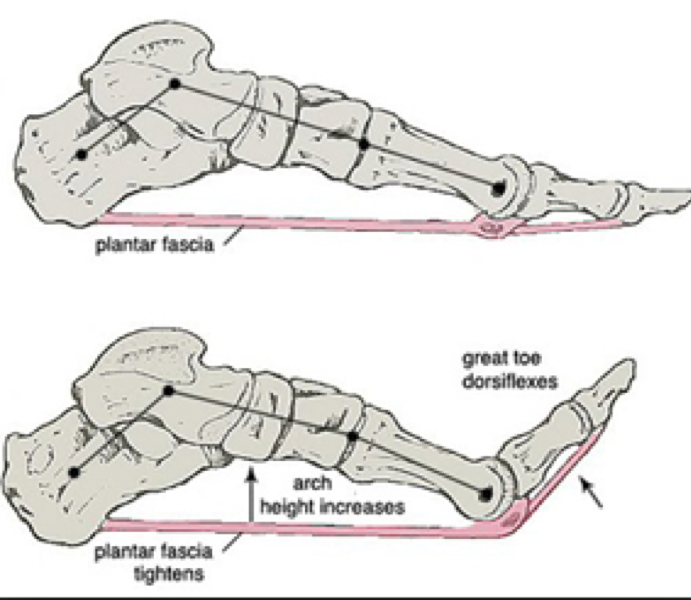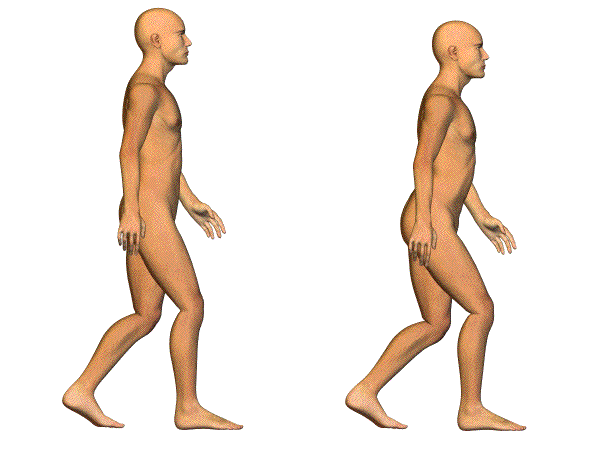The tunnel not being able to slide normally leads to what is called "tenodesis", a taut rope effect under the sole of the foot which occurs when the ankle is positioned in dorsiflexion. This effect causes automatic plantar flexion of the 1st toe and prevents physiological dorsiflexion of the big toe when propelled forward.
The tendon blockage has further consequences with the tendon passing between the sesamoids where the rope effect tends to move the sesamoid strap towards the 2nd metatarsal (a predisposing factor for hallux valgus) or can lead to increased stress in compression on the metatarsophalangeal joint (a predisposing factor for hallux rigidus).
General blockage of the sagittal plane
Inhibition of the big toe winch effect during propulsion (described by Hicks in 1954 "Windlass Mechanism").

Physiologically, the dorsiflexion of the big toe at the moment of propulsion tenses up the plantar fascia which hollows the arch of the foot and moves it from pronation to supination (external rotation) and the leg in external tibial rotation by the automatic synchronism which links the foot to the leg segment.
The tendon blockage of FHL defeats this physiological mechanism and has multiple consequences:
- On the foot : As described above, there is a predisposition to hallux rigidus or valgus, and also to the sagging of the plantar arch (flat foot) and slow fractures. The tendon problem blocks the subtalar joint in varus feet and thus prevents the foot from adapting to the irregularity of the ground.
- On the heel : The attack of the exaggerated supine step leads to an unstable balance which favors sprains.
- On the knee : In the form of overload tendonitis, because there is a more pronounced attack of the step which puts more of a strain on the outer part. The external rotation puts extra strain on the muscles and tendons which try to slow down the movement (eccentric contraction). FHL also predisposes to sprains, (see "Implications"), due to a mechanism linked to the abrupt tilting of the foot in pronation at the end of the support phase when walking, running or landing from a jump.
- On the hips : FHL leads to femoroacetabular impingement due to a weakening of the gluteal lever which causes a pelvic tilt forward. This postural deficit is further increased by the valgus of the knee (medial collapse) which places the hip in an exaggerated internal rotation.
- On the back : In particular the lumbar region due to the forward projection of the trunk, as Howard Dananberg explains very well.

It is indeed a chain reaction which is explained by the interarticular synchronism regulated by the coxa pedis and the manner of walking which is affected by the presence of FHL (as seen on the man on the right).
Learn more
Functional Hallux Limitus or Rigidus Caused by a Tenodesis Effect at the Retrotalar Pulley (english)2013 FHL CONGRESS - BIOMECHANICAL CONSEQUENCES OF THE FUNCTIONAL HALLUX LIMITUS
Functionnal hallux limitus - form and function
Hallux limitus fonctionnel (HLF): implication du HLF dans les troubles de la marche et de la posture
Biomécanique de la course
 EN
EN  DE
DE  ES
ES  FR
FR 